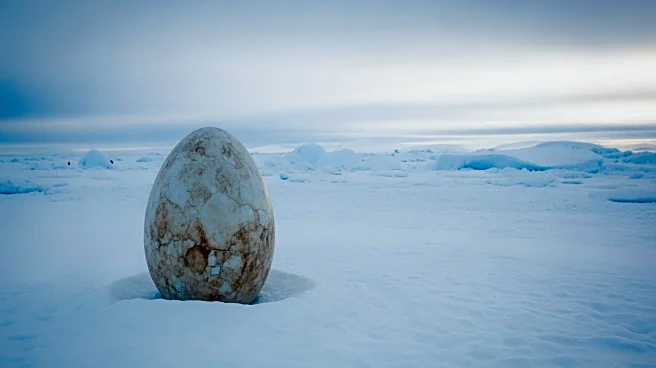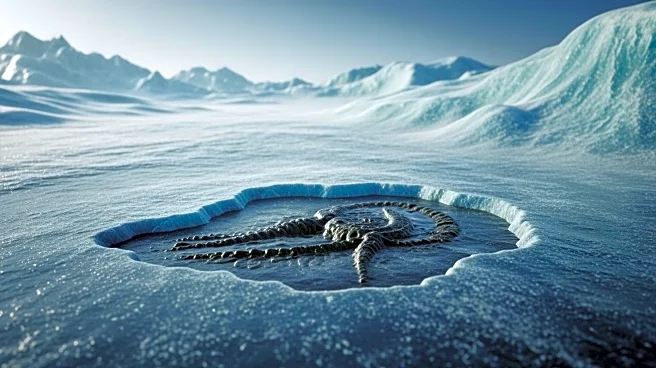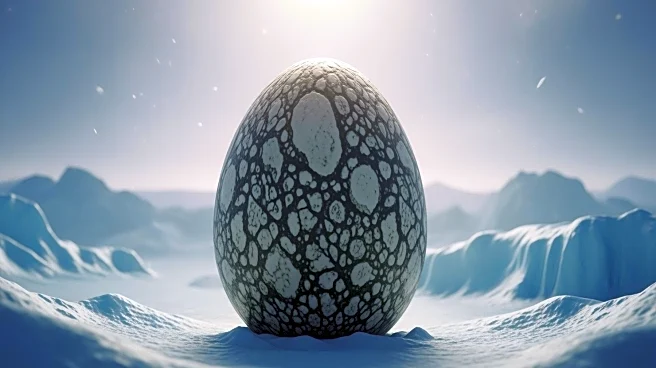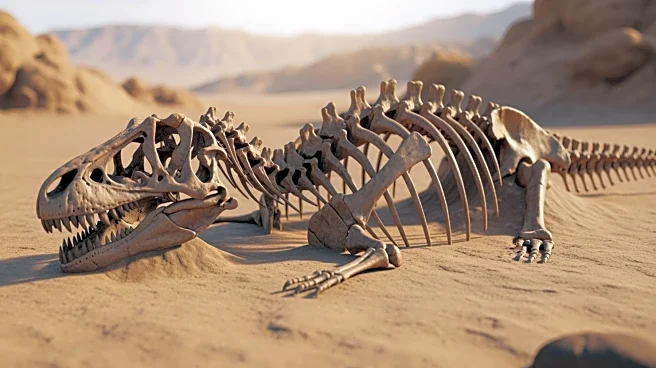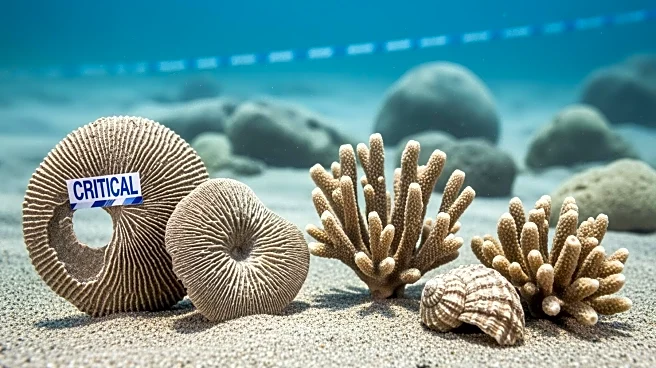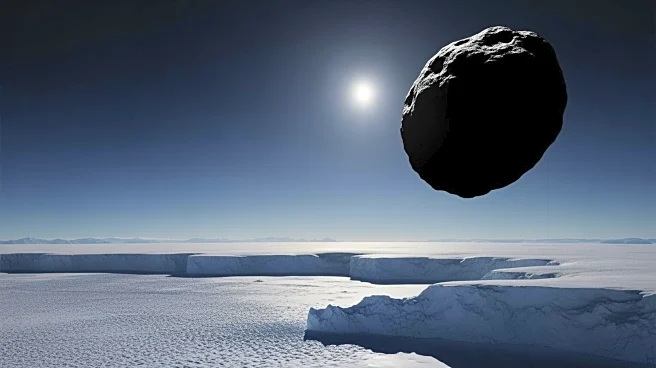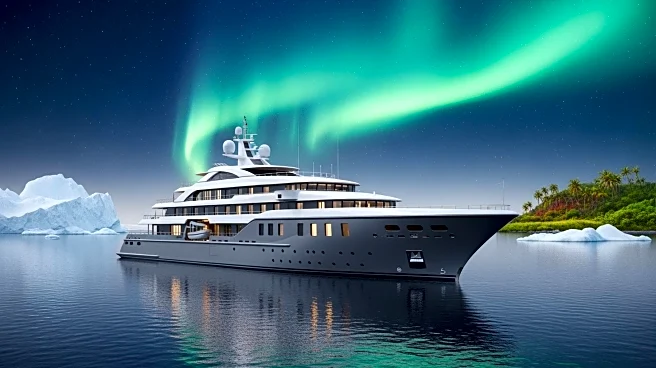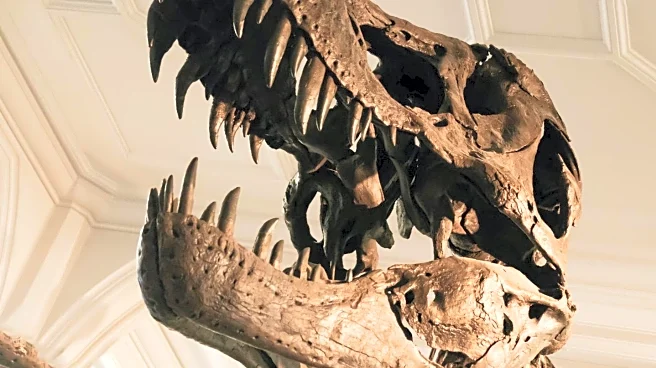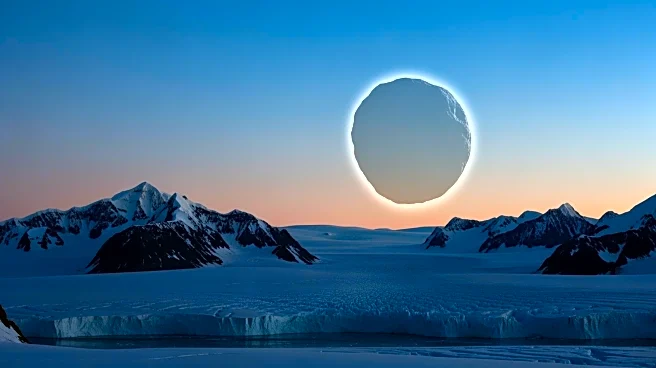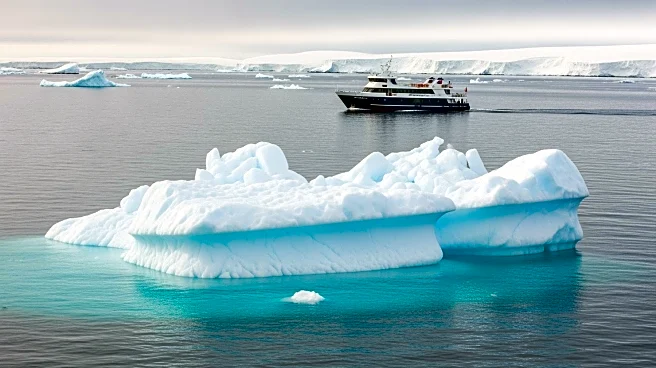What's Happening?
A team of Chilean researchers has uncovered a massive fossilized egg in Antarctica, dating back approximately 66 million years. The egg, found on Seymour Island, is soft-shelled and leathery, unlike any
previously discovered fossilized eggs. Nicknamed 'The Thing,' the egg measures about 29 centimeters long and 20 centimeters wide, making it the largest soft-shelled egg ever found and the second-largest egg of any type on record. The discovery challenges existing theories about ancient marine reptile reproduction, suggesting that some may have laid eggs rather than giving live birth. The egg's proximity to fossils of Kaikaifilu hervei, a giant mosasaur, has led researchers to speculate that it may belong to a large marine reptile.
Why It's Important?
This discovery has significant implications for our understanding of prehistoric reproduction. Traditionally, it was believed that early dinosaurs and their relatives laid hard-shelled eggs. However, recent research indicates that the earliest dinosaur eggs were soft, with leathery shells similar to those of turtles. The Antarctic egg suggests that soft-shelled eggs may have been more common than previously thought, as they rarely fossilize. This finding could lead to a reevaluation of how ancient marine reptiles reproduced and how their young were nurtured. Additionally, the preservation of such delicate fossils in Antarctica highlights the region's potential to provide insights into ancient life.
What's Next?
Researchers plan to continue studying the site to determine if it served as a breeding ground for marine reptiles during the Cretaceous period. Further excavations may reveal more about the reproductive habits of these ancient creatures and the environmental conditions that allowed for the preservation of soft-shelled eggs. The ongoing research could reshape our understanding of prehistoric ecosystems and the evolutionary history of marine reptiles.
Beyond the Headlines
The discovery underscores the importance of Antarctica's unique geological conditions in preserving delicate fossils that might disintegrate elsewhere. It also raises questions about the adaptability of ancient species to different environmental conditions, potentially offering insights into how current species might adapt to changing climates.
